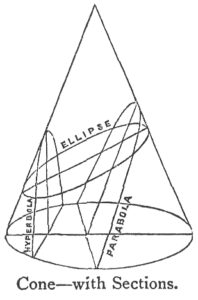3D
Unsere physische Welt ist räumlich. Wir denken und konstruieren Architektur dreidimensional.
Das Zweidimensionale ist geometrisch (mathematisch) eine Teilmenge des Raums und gestalterisch eine Abstraktion des Dreidimensionalen.
In den Kursen des Lehrgebiets Gestalten Entwerfen Darstellen (GED) ist der Ausgangspunkt sowie die Zielsetzung der Inhalte stets im räumlichen Kontext.
Die gestalterische, entwurfliche und konstruktive Bearbeitung dieser Inhalte geschieht immer am plastischen Modell, sowohl physisch (analog) als auch digital.
Neben dem physischen und maßstäblichen Modellbau gehört das dreidimensionale digitale Konstruieren (3D-CAD) zu den grundlegenden Fähigkeiten, die Studierende der Architektur unbedingt besitzen müssen.
3D
Our physical world is spatial. We think and construct architecture three-dimensionally.
The two-dimensional is geometrically (mathematically) a subset of space and creatively an abstraction of the three-dimensional.
In the courses of Gestalten Entwerfen Darstellen (GED) the starting point as well as the objective of the contents is always in the spatial context.
The creative, design and constructive processing of these contents is always conducted through model making, both physically and digitally.
In addition to physical and true-to-scale model making, three-dimensional digital design and construction (3D-CAD) is one of the basic skills that students of architecture must possess.



Der Zweck dieser Seite ist das Angebot von 3D-CAD-Video-Anleitungen, die in Art und Umfang dem Curriculum (Einsatz an) unserer Architekturfakultät angepasst sind. Als Einstieg und Ergänzung zu einer Vielzahl an Resourcen, die im Netz verfügbar sind (siehe auch Link-Auswahl am Ende dieser Seite).
The purpose of this page is to offer 3D CAD video tutorials, which are adapted to the curriculum of our faculty of architecture in type and scope, and on top of that as an introduction and supplement to a variety of resources available on the net (see also link selection at the end of this page).
Anmerkung:
An der TH Nürnberg lernen Studierende der Architektur ab dem 1.Semester Bachelor 3D-CAD als primären Einstieg in das digitale Zeichnen.
Ab dem 3. Semester Bachelor folgt das parametrische Konstruieren.
Beide Inhalte sind obligatorisch und Teil des Curriculums des BA-Studiengangs.
Im MA-Studiengang werden o.a. Inhalte vertieft, insbesondere in den GED Entwurfsstudios.
Bedingung für die Aufnahme in den MA-Studiengang ist unter Anderem die grundlegende und nachweisliche Kenntnis der o.a. digitalen Zeichen- und Konstruktionsmethoden anhand gängiger Softwarepakete, vorzugsweise Rhinoceros, 3DS-Max, Cinema 4D.
Note:
At the TH Nürnberg students of architecture learn 3D-CAD from the 1st semester onwards as a primary introduction to digital drawing.
Parametric design follows from the 3rd semester onwards.
Both contents are obligatory and part of the curriculum of the BA program.
In the MA programme, the above mentioned contents are deepened, especially in the design studios of GED.
The prerequisite for admission to the MA programme is, among other things, basic and proven knowledge of the above digital drawing and construction methods using common software packages, preferably Rhinoceros, 3DS-Max and Cinema 4D.
Apollonios of Perge (ca. 265 – ca. 190 B.C.) was an ancient Greek mathematician, known for his book on conic sections. He proved that the four different conic sections (ellipse, circle, parabola and hyperbola), whose names and definitions he introduced, were derived from the same general cone type. In astronomy he contributed to the theory of lunar and planetary motion and therefore demonstrated a profound understanding of ‘space’ / three-dimensionality.
Probably the right-angled Cartesian coordinate system, although named after René Descartes (see right), in which every point in space can be determined by fixed coordinates, is attributed to him (amongst others). (Sources: Wikipedia (1,2))
Illustrations:
above: Conic sections (ellipse, parabola, hyperbola) (>image source)
below: Cartesian three-dimensional Coordinate System (>image source)
René Descartes (1596 – 1650 in Stockholm) was a French philosopher, mathematician and natural scientist. He was known among other things for his contributions to geometry: He “invented the convention of representing unknowns in equations by x, y and z, and knowns by a, b and c”. He also “pioneered the standard notation” that uses superscripts to show the powers or exponents; for example, the 2 used in x2 to indicate x squared.
He combined geometry and algebra and is thus one of the pioneers of analytic geometry, which enables the computational solution of geometric problems. In this respect, his contributions were fundamental for the numerically precise recording of space – and ultimately, of course, also for CAD. (Sources: Wikipedia (1,2)
Illustration:
Portrait of René Descartes von Frans Hals, 1648 (>image source)

RHINOCEROS
GRASSHOPPER
Rhinoceros (Rhino) gilt seit 2011 an der Fakultät Architektur der TH Nürnberg als Softwarestandard für das 3-D-CAD. Rhinoceros ist ein Freiformmodellierer (free form surface / NURBS-modeller), der durch Module erweiterbar ist und mit dem jegliche räumliche Geometrie numerisch präzise erstellt und umfassend bearbeitet werden kann.
Grasshopper (GH), die integrierte Schnittstelle für visuelles Scripting ermöglicht die parametrische Generierung von Geometrie und eine Vielzahl von Analysemöglichkeiten.
Wir benutzen diese Kombination (Rhino-GH) nebst ausgewählter Erweiterungen als digitales Werkzeug der Wahl für Entwurf/Formfindung sowie Konstruktion/Formoptimierung – nicht nur in den Kursen des GED.
Rhino bietet Schnittstellen zu anderen digitalen Planungswerkzeugen, die ebenfalls in der Lehre eingesetzt werden, beispielsweise Vectorworks, ArchiCad/AllPlan als Konstruktions- und Planungswerkzeug sowie (voraussichtlich ab 2019) Revit als BIM-Planungswerkzeug. Der digitale Workflow, nämlich in diesem Falle der (dynamische) Austausch von Daten zwischen verschiedener Software – und letztendlich auch zwischen verschiedenen Personen(gruppen) – ist Alltag in Hochschule und Praxis.
RHINOCEROS
GRASSHOPPER
Rhinoceros (Rhino) has been the software standard for 3-D CAD at the Faculty of Architecture of the TH Nuremberg since 2011. Rhinoceros is a free-form modeler (free form surface / NURBS-modeller) that can be extended by modules and with which any spatial geometry can be numerically precisely created and comprehensively edited.
Grasshopper (GH), the integrated interface for visual scripting, allows the parametric generation of geometry and a variety of analysis options.
We use this combination (Rhino-GH) along with selected extensions as the digital tool of choice for design/form finding and construction/form optimization – not only in the GED courses.
Rhino provides interfaces to other digital planning tools that are also used in teaching, such as Vectorworks, ArchiCad/AllPlan as design and planning tools, and (expected from 2019) Revit as a BIM planning tool. The digital workflow, in this case the (dynamic) exchange of data between different software – and ultimately also between different individuals (groups) – is part of everyday life at the university and in practice.

x
LINKS
x
Rhino can be obtained through the official McNeel-Rhino-Website. Student discount available.
Please make sure you install Rhino in English as most online resources refer to the English version.
rhino3d.com/edu
User Manual (should be accessible for reference), as HTML or PDF version. English version:
http://docs.mcneel.com/rhino/6/usersguide/en-us/index.htm
Some other external training resources will be listed in the appendix of the following Videotutorials.
Anmerkung:
Rhinoceros V5/V6 samt Grasshopper ist auf manchen Laborrechnern installiert. Bitte wenden Sie sich bei Fragen an die Laboringenieure. Für Bezugsquellen, Installationsanleitungen und weitere algemeine Informationen siehe Link-Verweise.
Note:
Rhinoceros V5/V6 and Grasshopper is installed on some of the Computers in our Lab. Please refer to staff if any questions. For download sources, installation instructions and other general information, see link references.
Illustration:
Our inhouse certified Rhino professional (>image source)
Disclaimer:
Some links refer to external websites. The respective provider is responsible for the content and correctness of the information provided on the respective website. (>more)
Haftungsausschluss:
Einige Links verweisen auf externe Webseiten. Für die Inhalte und Richtigkeit der bereitgestellten Informationen der jeweiligen Webseite ist der jeweilige Anbieter verantwortlich. (>mehr)
Video-Tutorials
Mathematisch eindimensionale Objekte, nämlich Kurven (Linien) definieren mathematisch zweidimensionale Objekte, nämlich Flächen, die widerum mathematisch dreidimensionale Objekte begrenzen.
Aus diesem Grund gliedern sich die Video-Tutorials in folgende drei Kapitel:
Rhinoceros:
Kurve | Curve (1D)
Fläche | Surface (2D)
Körper | Solid (3D)
Rhinoceros+Grasshopper:
Parametrisches Modell | parametric model (1-3D)
Anwendungen | Applications (div. Anwendungsbeispiele)
Video-Tutorials
Mathematically one-dimensional objects, namely curves (lines), mathematically define two-dimensional objects, namely surfaces, which in turn mathematically constrain three-dimensional objects.
For this reason, the video tutorials are divided into the following three chapters:
{ see left }
Please note that the audio of the Videos is in German. The program interface is English though.
For Video-Tutorials in English we recommend those of the TU Delft, you’ll find the links in the link list, further down.
Rhino(ceros)
Diese Tutorials sind in folgender Reihung zu folgen:
x
Grasshopper
Diese Tutorials erfordern weiterführende Kenntnisse in Rhino (s. Tutorials links)
Anwendungen
Beispielhafte Anwendungen | Übungen
x
Externe Resourcen
Folgende Seiten listen weiterführende externe Quellen zu Tutorials, Plug-Ins und Zusatzsoftware auf
(…)


